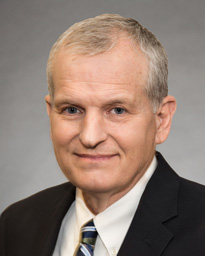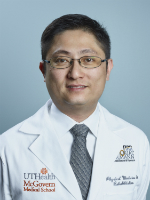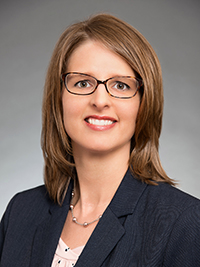 Leaders at TIRR Memorial Hermann have long recognized the benefit of researchers working hand in hand with clinicians. In 2013, with funds raised through the Memorial Hermann Foundation’s successful Revolutionizing Neuroscience initiative, they turned a large, long-vacant building adjacent to the hospital into the TIRR Memorial Hermann Research Center.
Leaders at TIRR Memorial Hermann have long recognized the benefit of researchers working hand in hand with clinicians. In 2013, with funds raised through the Memorial Hermann Foundation’s successful Revolutionizing Neuroscience initiative, they turned a large, long-vacant building adjacent to the hospital into the TIRR Memorial Hermann Research Center.
“Bringing all of our researchers together in one space so close to the hospital gave us the opportunity to create synergy between the investigators and our clinical team,” says Gerard Francisco, MD, Chief Medical Officer at TIRR Memorial Hermann and Professor and Chair of the Department of Physical Medicine and Rehabilitation at McGovern Medical School at UTHealth. “By bringing researchers in disparate disciplines together with clinicians, we’re forging collaborations that change the way we do research in our field.”
 The culture of rehabilitation and close teamwork between researchers and clinicians allows TIRR Memorial Hermann to streamline the process of introducing new interventions. “Much of our research doesn’t involve the major safety issues associated with implementing a new medication or surgery, so we’re able to try new interventions and improve them based on feedback from our clinicians, patients and their families,” says Mark Sherer, PhD, ABPP, FACRM, senior scientist and Associate Vice President for research at TIRR Memorial Hermann and clinical professor of physical medicine and rehabilitation at McGovern Medical School. “For example, Dr. Angelle Sander currently is trialing a psychotherapy intervention for treatment of emotional distress after traumatic brain injury. As she developed the intervention, she interviewed the therapy team, the patients themselves and their families, and during implementation, she solicited feedback. Because we have the opportunity to work with patients over longer periods of time, we can adjust our interventions to produce better outcomes.”
The culture of rehabilitation and close teamwork between researchers and clinicians allows TIRR Memorial Hermann to streamline the process of introducing new interventions. “Much of our research doesn’t involve the major safety issues associated with implementing a new medication or surgery, so we’re able to try new interventions and improve them based on feedback from our clinicians, patients and their families,” says Mark Sherer, PhD, ABPP, FACRM, senior scientist and Associate Vice President for research at TIRR Memorial Hermann and clinical professor of physical medicine and rehabilitation at McGovern Medical School. “For example, Dr. Angelle Sander currently is trialing a psychotherapy intervention for treatment of emotional distress after traumatic brain injury. As she developed the intervention, she interviewed the therapy team, the patients themselves and their families, and during implementation, she solicited feedback. Because we have the opportunity to work with patients over longer periods of time, we can adjust our interventions to produce better outcomes.”
 Shuo-Hsiu (James) Chang, PT, PhD, is Administrative Director of the NeuroRecovery Research Center at TIRR Memorial Hermann and an Assistant Professor of Physical Medicine and rehabilitation at McGovern Medical School. “When clinicians work with us as we develop novel rehabilitation strategies from laboratory findings, they provide advice based on their clinical experience,” he says. “Their participation expands their horizons so that they arrive in the clinic already thinking outside the box in terms of how to improve patient outcomes. One example is our use of upper- or lower-limb exoskeletons. Exposure to the research side encourages them to think of new ways to use the technology and current evidence of neuroplasticity to promote faster recovery.”
Shuo-Hsiu (James) Chang, PT, PhD, is Administrative Director of the NeuroRecovery Research Center at TIRR Memorial Hermann and an Assistant Professor of Physical Medicine and rehabilitation at McGovern Medical School. “When clinicians work with us as we develop novel rehabilitation strategies from laboratory findings, they provide advice based on their clinical experience,” he says. “Their participation expands their horizons so that they arrive in the clinic already thinking outside the box in terms of how to improve patient outcomes. One example is our use of upper- or lower-limb exoskeletons. Exposure to the research side encourages them to think of new ways to use the technology and current evidence of neuroplasticity to promote faster recovery.”
 Rhonda Abbott, PT, FTPTA, agrees. “When we sit at the same table, we feed each other from the clinical point of view and the research point of view,” says Abbott, Associate Vice President of Clinical Operations. “As clinicians we know the priorities of our patients. We can help the researchers refine their research aims and protocols based on our clinical insights. Recently Katie Nedley, an occupational therapist, told me she loves sitting at the table with the dreamers. I love that way of expressing these collaborative moments! The researchers may ask us why patients can’t complete a task a certain way. That question moves the therapists into the “dreamer” role and drives them dig layers deeper into cause, need and possible outcomes. When the therapists return to patient care, they’re even more creative in their approach. Instead of accepting an intervention as “the way we do it,” they’ll approach it from five different angles and attempt something new. Research is about pushing the envelope, and exposing our therapists to it in the development stages encourages that same kind of innovative and possibility-focused thinking in the clinic.”
Rhonda Abbott, PT, FTPTA, agrees. “When we sit at the same table, we feed each other from the clinical point of view and the research point of view,” says Abbott, Associate Vice President of Clinical Operations. “As clinicians we know the priorities of our patients. We can help the researchers refine their research aims and protocols based on our clinical insights. Recently Katie Nedley, an occupational therapist, told me she loves sitting at the table with the dreamers. I love that way of expressing these collaborative moments! The researchers may ask us why patients can’t complete a task a certain way. That question moves the therapists into the “dreamer” role and drives them dig layers deeper into cause, need and possible outcomes. When the therapists return to patient care, they’re even more creative in their approach. Instead of accepting an intervention as “the way we do it,” they’ll approach it from five different angles and attempt something new. Research is about pushing the envelope, and exposing our therapists to it in the development stages encourages that same kind of innovative and possibility-focused thinking in the clinic.”
Researchers who read current articles as they prepare to write grant proposals offer in-services for TIRR Memorial Hermann clinicians, as well as courses attended by clinicians from other states and countries. “This contributes to the integration of current knowledge into clinical processes, resulting in better outcomes for patients around the world,” Dr. Sherer says. “The process of conducting research always leads to improvements, even if you fail to achieve your desired outcome. It may result in clearer thinking about the patient condition, greater consistency in thought and treatment, and better follow-through.”
TIRR Memorial Hermann clinicians who are interested in pursuing a part-time research role are supported by their managers and directors and funded organizations such as the Center for Wearable Exoskeletons, supported by the Memorial Hermann Foundation. “They are already in touch with the literature and have the background to jump into research if they decide it’s of interest to them,” Abbott says. “If they’re passionate about it, we support them in carving out that shared path for themselves.”
Dr. Sherer, Dr. Chang and Abbott believe that TIRR Memorial Hermann has an obligation as a leader in rehabilitation to disseminate new knowledge around the world through education and research. “We can translate knowledge into practice, but the act of doing so does take effort,” Dr. Sherer says. “We have researchers at the same table over and over again with the clinical team. Our efforts are more successful due to information sharing between these two groups.
“The second-story walkway that attaches the research center to the hospital helps to bring our programs together, but it didn’t just happen,” he says. “There was quite a bit of structural intervention involved in driving this culture change. We’ve had to schedule meetings and build relationships. We designate the research experts to be present on a monthly basis and as they’re discussing new ideas coming down the pike, the clinicians say we think this particular patient or client would be good to work with you, and we work together to get them involved. Linking research and clinical care was a significant step forward for us as an institution. It’s part of our larger vision.”



